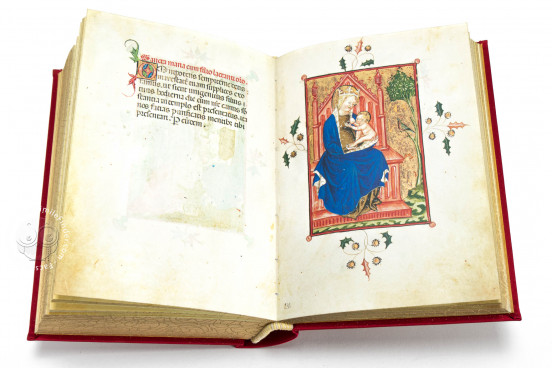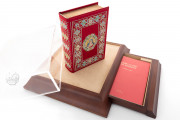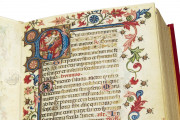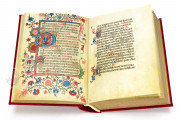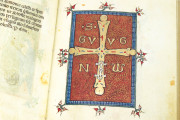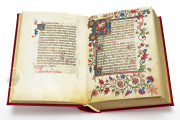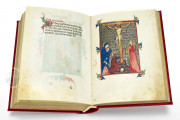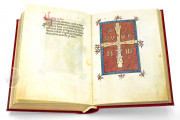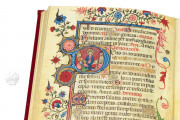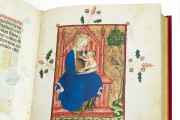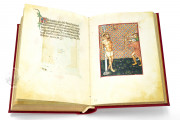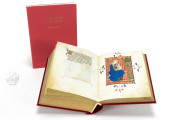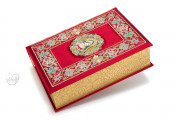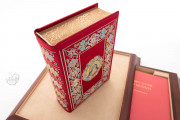Enveloped in a luxurious sixteenth-century binding, the Modena Hours is a monument of late fourteenth-century illumination and represents a final flowering of the patronage surrounding the luminous Visconti Court. The codex boasts twenty-eight full-page miniatures with sumptuous, patterned backgrounds of gold or gold and colors. Fifteen of those miniatures are accompanied by painted borders. The remainder of the manuscript is brimming with painted borders and initials (some of which are historiated) that showcase the generous use of gold and vivid colors for which Lombard painting is renowned.
The manuscript is a book of hours, a prayer book for the use of the Christian laity. It begins with a calendar and continues with the Hours of the Virgin and suffrages (short prayers addressed to saints) in Latin.
An Artist Attached to the Princely Visconti Family
Tomasino da Vimercate—once known as the Master of Modena after his work on this manuscript—was a central figure of Milanese painting. He likely trained in the workshop of Giovannino de' Grassi and worked for the Visconti family, rulers of Milan at the time.
A Patron's Pride
An entire page is dedicated to the reliquary of the holy nail in Milan (fol. 234r). According to the account of Milan's storied fifth-century bishop Saint Ambrose, the nail of the cross was found by the Empress Saint Helen and given to her son, Constantine I (d. 331), "the Great," Emperor of Rome, whereupon it was bent into a bridle for his horse. It is unclear how the Constantinian relic found its way to Milan, but given the city's status as an imperial capital, it may have been a gift.
The gilt and jeweled-studded cross that forms the reliquary is pictured on an ornate red background with gold scrolling vines, its arms extending past the elegant blue frame. Signaling the beginning of the prayers addressed to the Corpus Domini (body of the Lord), the relic is the silver object pictured hanging from just below the center of the cross. The representation was surely included to emphasize the patron's pride in his Milanese identity.
From the Visconti Court
The Obsecro te is one of several prayers in the manuscript that includes the phrase "your servant Balzarino" (fol. 140v), offering the given name of the original patron. This, along with a coat of arms (fol. 12r), allows the identification of the manuscript's patron as the wealthy Milanese nobleman Balzarino de Pusterla, a courtier of Filippo Maria Visconti (1392-1447), Duke of Milan.
As evidenced by an ex libris inscription, the book became part of the refined collection of Pio Enea degli Obizzi (a dignitary of the court of Francesco IV d'Este) sometime during the eighteenth century. The book was donated to the Biblioteca Estense Universitaria in 1817.
An Embroidered Binding
The luxurious pink silk binding features embroidered panels on the spine and on the edges of the front and back boards. A bust of the Virgin Mary is embroidered on the front cover and the owner's coat of arms is on the back.
We have 1 facsimile edition of the manuscript "Modena Hours": Libro d'Ore di Modena facsimile edition, published by Il Bulino, edizioni d'arte, 2006
Request Info / Price
